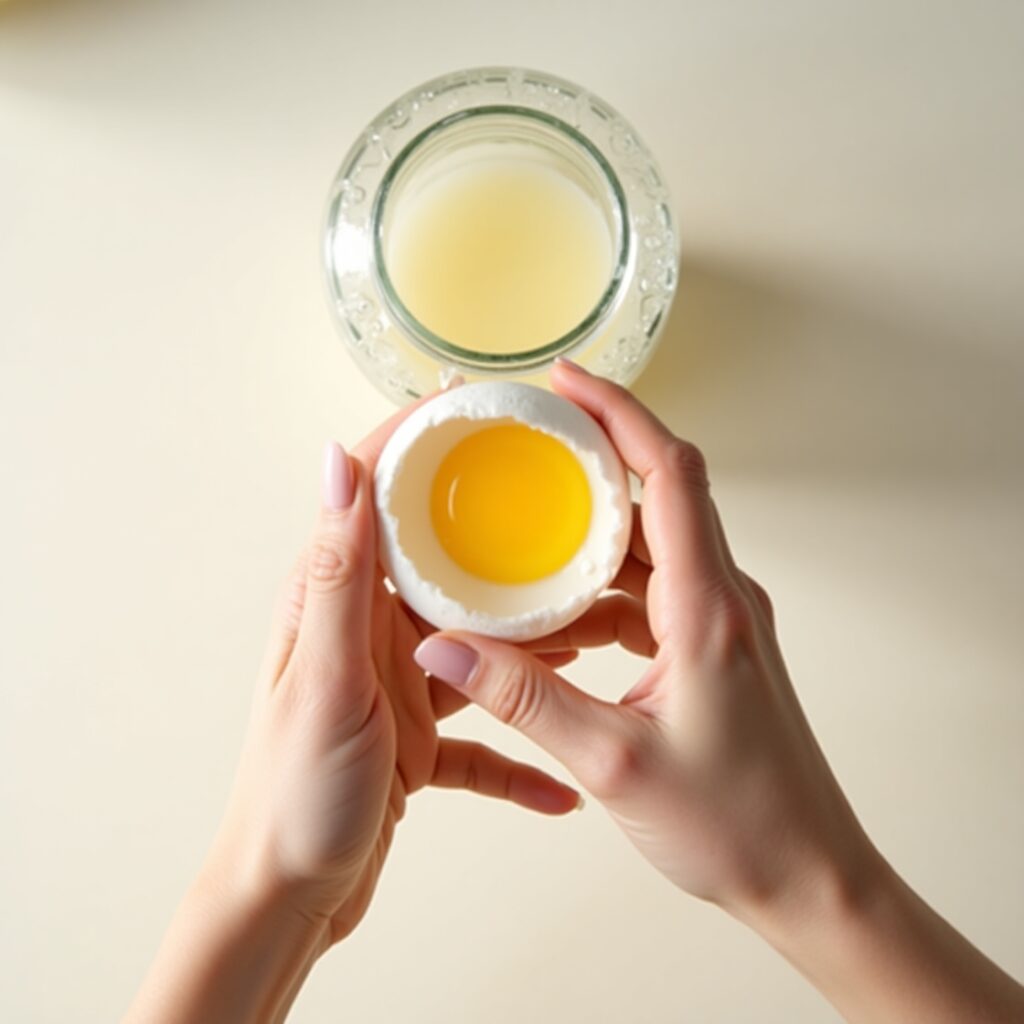How to Test Egg Freshness with the Water Trick

Step-by-Step Guide
- Fill a bowl or glass with cold water.
Make sure it’s deep enough to completely submerge the egg. - Gently place the egg into the water.
Be careful not to crack it. - Observe how the egg behaves.
This is where the magic happens!
Here’s what the results mean:
- Egg sinks and lays flat on the bottom:
✅ Super fresh! These eggs are perfect for frying, boiling, or scrambling. - Egg sinks but stands upright:
🤔 Still good, but not super fresh. Use these soon — great for baking! - Egg floats to the top:
❌ Time to toss it. A floating egg is a clear sign that it’s gone bad.
Image alt-text: “A hand holding a cracked egg above a jar of water to test freshness”
Why Does the Egg Float Test Work?

This kitchen hack isn’t magic — it’s science! As eggs age, air gradually seeps in through the shell. The more air inside, the more buoyant the egg becomes. A fresh egg has very little air, so it stays at the bottom. An old or spoiled egg has absorbed more air, making it float.
The egg float test is a time-tested method that many home cooks and chefs trust for its simplicity and accuracy.
Tips for Storing Eggs to Keep Them Fresher Longer
Want to avoid spoiled eggs in the first place? Try these egg storage tips:
- Keep them in the fridge.
The ideal temperature is 35–40°F. - Store in the original carton.
It protects the eggs and prevents them from absorbing fridge odors. - Keep them on a shelf, not the door.
The door is exposed to warm air each time it opens, which can reduce egg lifespan. - Label with the date.
Use a marker to note when you bought them.
Other Ways to Check Egg Freshness (If You’re Still Unsure)
If you’re still hesitant after the float test, here are a couple of backup methods:
1. The Sniff Test
Crack the egg into a bowl.
- Smells fine? You’re probably good to go.
- Smells bad? Don’t even think about cooking it.
2. The Shake Test
Hold the egg close to your ear and shake it gently.
- Sloshing sound? It’s likely old.
- No sound? Likely still fresh.
3. The Visual Test
Look for:
- Discoloration
- Cloudy whites
- Unusual spots
While not always reliable on their own, these signs can confirm the float test results.
How to Test Egg Freshness with the Water Trick

Step-by-Step Guide
- Fill a bowl or glass with cold water.
Make sure it’s deep enough to completely submerge the egg. - Gently place the egg into the water.
Be careful not to crack it. - Observe how the egg behaves.
This is where the magic happens!
Here’s what the results mean:
- Egg sinks and lays flat on the bottom:
✅ Super fresh! These eggs are perfect for frying, boiling, or scrambling. - Egg sinks but stands upright:
🤔 Still good, but not super fresh. Use these soon — great for baking! - Egg floats to the top:
❌ Time to toss it. A floating egg is a clear sign that it’s gone bad.
Image alt-text: “A hand holding a cracked egg above a jar of water to test freshness”
Why Does the Egg Float Test Work?

This kitchen hack isn’t magic — it’s science! As eggs age, air gradually seeps in through the shell. The more air inside, the more buoyant the egg becomes. A fresh egg has very little air, so it stays at the bottom. An old or spoiled egg has absorbed more air, making it float.
The egg float test is a time-tested method that many home cooks and chefs trust for its simplicity and accuracy.
Tips for Storing Eggs to Keep Them Fresher Longer
Want to avoid spoiled eggs in the first place? Try these egg storage tips:
- Keep them in the fridge.
The ideal temperature is 35–40°F. - Store in the original carton.
It protects the eggs and prevents them from absorbing fridge odors. - Keep them on a shelf, not the door.
The door is exposed to warm air each time it opens, which can reduce egg lifespan. - Label with the date.
Use a marker to note when you bought them.
Other Ways to Check Egg Freshness (If You’re Still Unsure)
If you’re still hesitant after the float test, here are a couple of backup methods:
1. The Sniff Test
Crack the egg into a bowl.
- Smells fine? You’re probably good to go.
- Smells bad? Don’t even think about cooking it.
2. The Shake Test
Hold the egg close to your ear and shake it gently.
- Sloshing sound? It’s likely old.
- No sound? Likely still fresh.
3. The Visual Test
Look for:
- Discoloration
- Cloudy whites
- Unusual spots
While not always reliable on their own, these signs can confirm the float test results.

